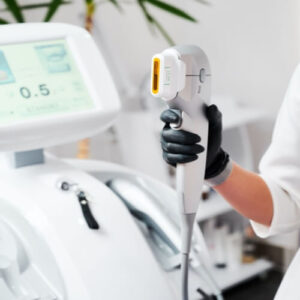Pneumonia: symptoms and treatment
Causes of pneumonia and treatment methods
Taviv
What is pneumonia?
Pneumonia is an infection of one or both lungs, caused by a bacterial, viral or fungal agent.
Pneumonia accounts for about 14% of deaths in children under 5 years of age, according to a report by the World Health Organization who will For 2019, pneumonia caused the death of approximately 740,180 children.
Pneumonia is an acute respiratory disease that affects the lung, and causes the small air sacs to fill with fluid and pus, resulting in difficulty breathing and a lack of oxygen exchange through the lung.
Pneumonia symptoms
Symptoms of infection may begin suddenly within 24 to 48 hours of infection, or may appear more slowly over several days (1).
Common symptoms
- cough up: It may be dry (phlegm) or wet (phlegm-producing). When sputum is accompanied by a yellow, green or brown color, and may be accompanied by the exit of blood threads.
- Breathing problems: The patient’s breathing is fast and shallow, even at rest
- rapid heartbeat
- Fever and high body temperature of the patient
- General feeling of tiredness
- Sweating and shaking
- Lack of appetite
- Chest pain, which worsens during breathing and coughing
Less common symptoms
- Coughing up blood (coughing up blood)
- Headache
- tiredness and feeling sick
- Hearing a sound called “wheezing” during the test, which is a chest sound similar to wheezing
- Muscle and joint pain
- Mental confusion, especially in the elderly (delirium)
pneumonia causes
There are many causes of inflammation (2)The injury can be classified according to the causative factor as follows:
1- Bacterial pneumonia
This pattern is caused by many bacteria. Pneumococci are the most important and common.
This infection usually appears when a person is ill for another reason such as a lack of healthy nutrition, advanced age and in cases of a weak immune system. Infection may occur in healthy individuals with no history of disease.
This pattern can appear at any age, but those at the highest risk are:
- alcoholics
- Cigarette smokers
- The patient has recently undergone surgery
- Have a previous respiratory illness or viral infection
- Immunosuppressive diseases
2- Viral pneumonia
This pattern is caused by many viral types such as influenza virus, adenovirus and more recently corona virus, such as the virus that causes the new corona virus. (3).
A patient with viral pneumonia is also more likely to suffer from a bacterial infection.
3- Fungal pneumonia
Fungi cause slightly different symptoms than those caused by other bacteria.
Complications of pneumonia
If the patient does not receive full and appropriate treatment, he may face many complications. (4).
These complications may be very dangerous at times, especially in patients suffering from chronic diseases.
For example, patients with chronic obstructive pulmonary disease (COPD) may lead to a state of hypoxia, and even respiratory failure, due to severe narrowing of the airways.
Also, patients with heart failure or those suffering from chronic cardiovascular diseases have a higher risk of heart attack, or worsening of heart failure.
Other complications of pneumonia include:
- Bacteremia and septicemia “septicemia“: This is considered a serious condition, where bacteria reach the blood to spread through it to many organs. This leads to what is known as “multiple organ failure”.
- pulmonary abscess This is a collection of pus (caused by the breakdown of lung cells) inside the lung.
- This case may need needle aspiration of these purulent fluids, in addition to treating the patient with strong and multiple antibiotics.
- Pleural infection: It is a collection of fluids within the space surrounding the lung, known as the pleura due to the transfer of lung bacteria to it.
- Renal failure
- respiratory failure
Risk factors and people most vulnerable to infection
There are many risk factors that increase a person’s risk of developing pneumonia and its complications (5). These factors include:
1- Age
Although all age groups may be affected, there are two age groups most vulnerable to infection and complications:
- Children and boys two years old and under: This is because their immune system has not yet developed enough to deal with pathogens, as we also find this in premature babies (premature babies).
- Seniors over the age of 65: With age, a person’s immune system weakens and becomes less able to fight disease-causing agents.
- In addition to the above, a large percentage of the elderly suffer from one chronic disease, which increases the complications of pneumonia.
2- Environmental and occupational factors
- Prolonged spending time in crowded environments and places with an increased risk of infection, such as army barracks, prisons, homeless shelters and nursing homes.
- Some cases of pneumonia may be caused by bacteria that infect birds or pets, so animal and bird workers may be at greater risk of infection.
3- Daily habits and life
- Cigarette smoking: Smoking reduces the lung’s ability to eliminate mucus produced by the lung.
- Abuse of alcohol and drugs: These substances weaken the ability of the immune system, and reduce its strength.
4- Some other medical conditions
- Brain disorders: The individual has had a stroke, dementia or Parkinson’s.
- Previous illnesses reduce the patient’s ability to cough and swallow, which increases the possibility of ingested substances entering the bronchi and lungs, resulting in pneumonia.
- Conditions that weaken the immune system: such as pregnancy, AIDS, organ transplants, cancer chemotherapy and corticosteroids.
- serious and critical illnesses: What requires the patient to be admitted to the hospital increases the patient’s vulnerability to infection by agents coming from the hospital, and here the case is often dangerous and difficult to treat.
- chronic diseases: such as asthma, bronchiectasis, cystic fibrosis and chronic obstructive pulmonary disease (COPD).
- Some other medical conditions: such as diabetes, malnutrition, sickle cell anemia and liver and kidney diseases.
injury diagnosis
Diagnosing pneumonia can sometimes be difficult due to the variety of symptoms that patients present, but the doctor must take the following steps to reach a confident diagnosis of infection (6):
1- Recording the medical history
The doctor will ask a series of questions about the patient’s symptoms and signs, and when they started.
The doctor may also ask about the possibility of the patient being exposed to the following:
- The patient has recently traveled to an endemic area
- Professional work that may expose the patient to infection
- Dealing with animals
- The person is close to another patient at home, school or work
2- Clinical examination of the patient
Listen to breath sounds with a stethoscope.
3- Additional diagnostic tests
- mini chest “x-ray”
- CBC blood cell count
- Measuring the percentage of oxygen in the patient’s blood that indicates the level of work of the lungs.
- Sputum test: a sample of the mucous material that may come out during coughing is taken for testing, and the bacterial cause is known.
- In seriously ill patients, the following actions can be performed:
- CT scan of the chest, especially in case of complications of pneumonia
- Measurement of arterial blood gases, such as oxygen and carbon dioxide in the blood
- Bronchoscopy
Treatment of pneumonia
The patient must receive immediate treatment after confirming the diagnosis to avoid complications, and both antibiotics and drinking sufficient amounts of fluids to compensate for the fluid deficiency that occurred are the basics of treatment (7).
Pain relievers such as paracetamol can also be used to relieve chest pain and fever.
1- minor injuries
In this case, the patient can receive treatment at home, but according to the instructions of the specialist doctor.
The treatment prescribed by the doctor is usually extended by five days, but it can be increased if there is no response after three days from the start of the treatment.
2- More serious injuries
Some patients may need to receive treatment in the hospital, especially in severe cases, where the patient cannot take his medication properly.
Resuscitation equipment and artificial respiration machines are also available in the hospital, in order to treat and support advanced cases. In severe cases, the patient receives two types of antibiotics at the same time.
and continue to give the patient antibiotics for a period ranging from 5 to 7 days, and may reach 10 days in some cases.
Prevention of pneumonia
A person can prevent pneumonia by doing the following (8):
- Wash hands regularly
- Clean and disinfect surfaces frequently touched by others
- Use tissue paper when coughing or sneezing
- to stop smoking
- Attention to chronic diseases and medical conditions, such as diabetes, asthma and heart disease
- Taking flu and pneumococcal vaccines, especially for high-risk groups (elderly and patients with respiratory system).





